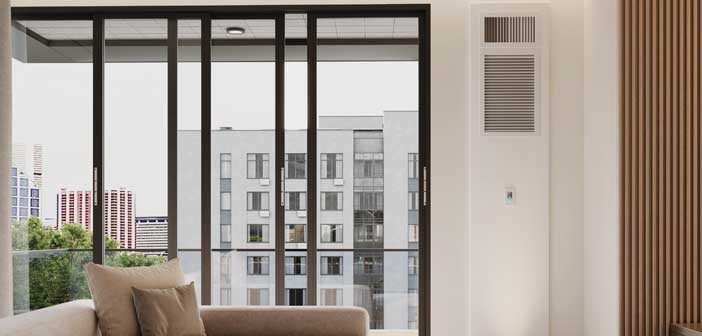One of the buzziest topics in hospitality—in fact, in all of society—has been artificial intelligence (AI). From guest interaction to problem solving, people have been debating how much machine learning should be a part of business operations.
Now, AI has entered the HVAC arena as manufacturer KOVA has introduced its KOVA Comfort Intelligent HVAC, which uses the technology to help provide guests with increased comfort when it comes to their room environment.
“This system is anticipating your needs,” said Brent Sturgell, head, HVAC business, KOVA. “It also isn’t just looking at temperature on the wall. Most thermostats are just looking at the simple temperature. They’re not looking at the wet bulb—actual temperature and humidity—side of the equation.”
He offered the example of a hotel in a high-humidity climate like Florida. “You get that little bit of mildew-type smell in the air, so this unit will help alleviate that by being able to watch the humidity side,” he said. “You can be cold and clammy, and even though it’s at the right temperature, it just doesn’t feel very comfortable. And that’s what this system does really well—dialing in that interplay between humidity in the air and the actual dry bulb temperature (actual temperature) in the room. Those two things are important factors to human comfort.”
There’s a misconception that putting in a large air conditioner will take care of the temperature and comfort in the room. “The air conditioner only takes care of the dry-bulb temperature when it’s running, and it is taking care of the wet bulb only as long as air is running across the coil,” said Sturgell. “But if you drive that temperature down quickly, you are not getting enough run time with the air changes that you need to remove the water in the air. That becomes the problem.”
The system uses AI to control that humidity, which not only provides for guest comfort, but can also increase the longevity of items like carpeting and furniture. “It is like having that imaginary person there deciding that it needs to ramp down to 20%, 30% or 80% depending on how the room is being used,” he said.
The AI can determine when people are in a room, compares the indoor and outdoor temperature and, over time, starts to learn the BTU load of that room. “You get a very specific profile of that particular room in that particular part of the building,” said Sturgell. “That is what can make it so comfortable, because that system may not know what the fifth floor is doing, but it knows its unit on the third floor at end of the hall is doing. ”
Each unit develops its own profile based on different factors, like where it is in the building or where the sun hits it throughout the day.
AI also offers the system a chance to cut energy usage over time, with the company claiming it can result in a more-than-30% energy savings. “The standard PTAC has one stage that, in itself, means that you’re banging on, and you are getting that full in-rush of amps that come into a room,” he said.
Most units are designed for the few days a year when temperatures hit extremes, according to Sturgell. “That is what the engineer is designing that HVAC for,” he said. “The AI allows you to chop off those top and bottom curves and keep the room in the middle. It also keeps the energy usage in the middle as well. That is where you can get the 20%-30% savings because you are not just jumping way up and inefficiently riding this curve. The system keeps it really smooth and that means a direct relationship to the amps that are being supplied.”
Beyond the AI component of the system, the unit also differs from traditional PTACs, according to Sturgell, because the vent is at 6-6.5-ft. level.
“It is putting that cold air out and letting it fall very nicely over the room,” he said. “We have done a lot of simulation work, which again feeds into this AI of how it fits into the room and how that discharge of air at different speeds operates in the space. It is a much more comfortable way of doing this because you’re mixing that cooler air with the warmer and bringing it down over the whole room instead of into a cold spot generally not far from the bed.”


